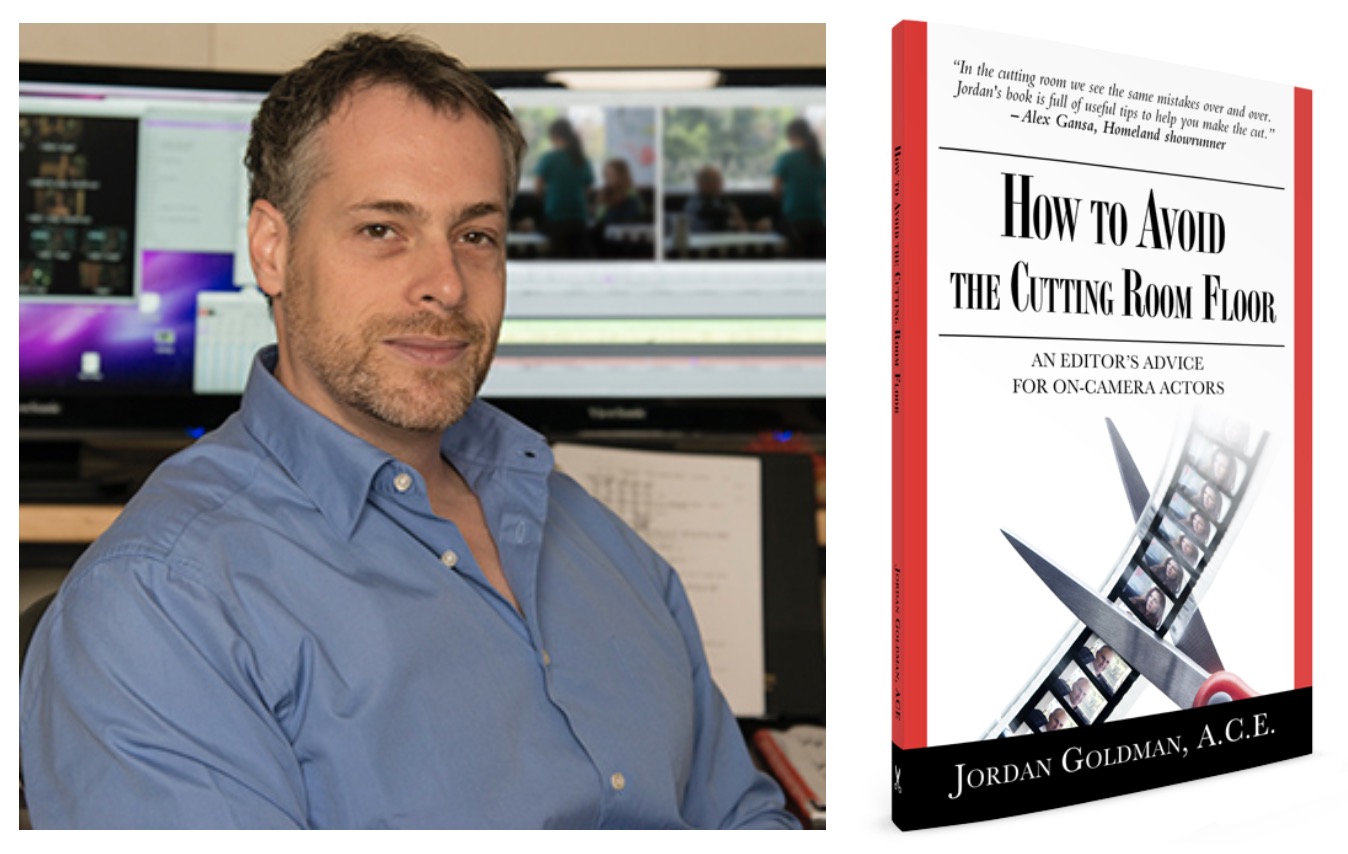Guest Post by Jordan Goldman A.C.E. – EMMY-winning Editor
When I’m editing a TV show or movie, I see actors do a lot of wonderful things. Unfortunately, I sometimes see them do some less-than-wonderful things that result in them being cut out of the show. So I wrote a book to tell actors what I know in the hopes of keeping them onscreen. Here’s my top 5 tips from “How to Avoid the Cutting Room Floor“.
Jordan’s top 5 tips:
1. Your 5 primary tasks:
The primary tasks of the actor (as awful as this may sound) are to:
- – stand in the right places
- – say the right words
- – be directable
- – convince the audience that you are the person the story claims you to be…
- – …experiencing the events and emotions that the story claims you are experiencing.
If you can do those five things, then you’re doing exactly what’s expected of you. You are fulfilling your part in the storytelling machine and you’re not sticking out as something that doesn’t fit with everything else on screen. Good job!
If you can’t accomplish those basic goals, then you’re not doing what you were hired for, and you become a problem that needs to be edited around.
2. Show a point of view
Don’t be a body in some clothes standing mindlessly as the life of the scene goes on around you. Your character has an opinion and an attitude about every person they encounter. Maybe your character hates the other person, maybe they love the other person, maybe they are annoyed by the other person, maybe they’re trying to ignore the other person. Those are all distinct points-of-view that can be played. Over the course of the scene, your attitude about the other characters will likely change. That’s interesting to watch too.
Having a strong point-of-view will naturally create interesting behavior. As an actor, knowing your character’s attitude about the people surrounding you and the situation you are in will help you figure out how to play the scene.
3. What’s your expectation?
Know where your character is coming from and what they have experienced. You never walk into a place without some sort of expectation, even if it’s as simple as “I’m going to walk to the counter and they’re going to take my order for a burger and fries.” We need to see that expectation in you from the very first second of your arrival. What was happening to you before you walked through this door? What do you expect to happen (or expect to find) when you get here? I’m asking myself these questions about the character before I start cutting the scene, so I’m looking for the answers on the actors’ faces when I start watching takes.
4. Show your moment of decision
When cutting a scene, I am always very interested in seeing the beat where the character decides to do something. I call this the “moment of decision.” The script presents the character with a choice or opportunity, and the character decides what to do.
For example, you’re a cop and the District Attorney wants you to lie on the stand to save the case. I want to see you decide to do the DA’s bidding, instead of seeing you simply agreeing to do his bidding. This makes your character’s actions seem like choices made in the moment, rather than pre-ordained outcomes from the script.
The moment of decision could also be for something much smaller — such as deciding to finally answer that phone which has been ringing during your conversation. It doesn’t have to be a world-changing moment. What’s important is that we see the beat of deciding.
I’m always looking for this moment because it answers the audience’s question “Why did they do that?” I like to see you come to an internal conclusion about what you’re going to do. Otherwise, your character seems to change their mind and act for no honest reason.
5. Know when to restart if you flub your line
If you mess up a line in the middle of a take, that’s OK. It happens.
When flubbing, many actors will immediately correct themselves by repeating the right scripted word, and then press on. Unfortunately, that doesn’t help me much, because they’ve restarted in the middle of a sentence. I want to keep your complete thought and action on camera — ideally including the emotional moment that led your character to say the dialogue — so I’d like you to start from the beginning of the sentence, or maybe even the beginning of that block of dialogue.
On set, the director will usually yell out where to restart from if they see you are having trouble, but if you are restarting yourself, then please remember — start back at the emotion that led to this beat.
I hope these tips can help you sharpen your game, and make it easier for your editor to keep you off the cutting room floor. We love to watch actors act – so please help us by mastering these skills!
To learn many more helpful tips, check out Jordan’s book “How to Avoid the Cutting Room Floor: An Editor’s Advice for on-Camera Actors”, available in print, Kindle, iBooks, and Nook.
Click here to see our Instagram Live chat with Jordan!











